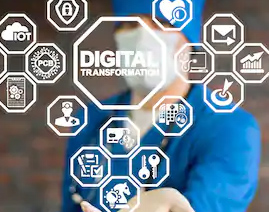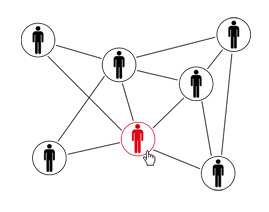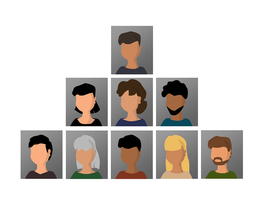Never ask employees what would make them happy at work. Do this instead...
Most managers have realized by now that happy workplaces are more productive, more creative, attract better talent and make more money.
So if you were a well-meaning manager or HR person looking to capitalize on this and create a happier workplace, you might be tempted to start by asking your employees some version of this question:
“What would make you happier at work?”
It seems like a great place to start. To make people happier, ask them what they want and them give them that. Right?
Wrong.
Here’s why: We know from the research that people are notoriously bad at predicting what will make them happy.
Stop random people on the street and ask them what would make their lives happier and a lot of them will reply “Winning the lottery.” But studies of lottery winners show that they are actually only marginally happier than all of us non-lottery millionaires.
Similarly if you ask employees what will make them happier at work you will most likely get responses like:
- A raise
- A promotion
- A bonus
- A gym in the office
- Free fruit
- Free lunches
But while all of this sounds perfectly reasonable (indeed, you might give some of the same answers if asked the same question), we know from the research that these factors don’t make employees any happier at work. Just to be clear: We cannot ignore them when making workplaces better, because these factors can absolutely make people unhappy when they’re unfair. But once they are fair, increasing them further does not increase happiness at all.
This explains why many organizations spend a ton of time and money on every perk imaginable and employees are still not happy.
Quite simply: giving employees what they ask for is doomed to fail, if they don’t know what to ask for. And they don’t.
What we need to do instead, is help people discover for themselves what reallymakes them happy at work and there’s a much better question for that:
Tell me about a recent good experience at work that made you happy.
This may look like essentially the same question as the one above so why is this one better? With the previous question (What would make you happy at work) we only get at the things people think will make them happy.
With the latter question, we ask about specific previous experiences that caused happiness. This means that we get directly at what really works.
I have used this question in hundreds of speeches all over the world and never once has anyone told a story of getting a raise, a promotion or a perk. Never once has anyone said “I was really happy last Thursday because I got a free apple.”
The one exception was when I did a workshop at Lego and an employee shared this example:
Every week our team gets a new box of fruit and there’s always only one banana in it. If I get there in time to get that one banana, it makes me really happy!
I’m 98% sure he was kidding!
Invariably, when people reflect on this question their stories fall into two categories.
They either talk about doing good work, achieving great results or making a positive difference for others. This includes things like:
I had a complicated problem on a project and found a really creative solution for it.
A customer liked my work so much they sent me an email with tons of positive feedback.
I helped a coworker by sharing advice and knowledge.
Or they talk about moments of personal connection at work, like:
I came back to the office from parental leave last week and so many people on my team welcomed me back with smiles and hugs.
I had a bad day and my manager noticed and did her best to help me.
We celebrated a team member’s birthday last week with cake and coffee and had a great time together.
Very often their stories contain both elements. That’s why we talk about results and relationships being the two main sources of happiness at work.
The upshotDon’t ask your employees what will make them happy – because they probably have completely the wrong idea and therefore giving them what they ask for won’t work. Instead, help them connect to past positive experiences because those are a much more reliable predictor of future happiness. And then work on doing simple daily actions that promote a feeling of results and relationships.
You May Also Like

The CMO of People
Many organizations are not getting the best out of their HR function. Ask a CEO, “What is your...

The Challenges of Hiring Future Ready Leaders and Russian Doll Theory of Hiring
One of the biggest challenges most companies face today is hiring transformational leadership talent...

Why Do Most Innovation Programmes Fail?
What do companies do when a new boss says “Innovation has to be part of our DNA”? Here ...

The Greatest Resource any Organization has is the Creativeness of People
For too many years people have been treated as expense items instead of highly valuable resources. T...

How To Quit A Job You Love
It is not easy to quit a job you love. Even with a new dream job in-hand, cutting the cord that conn...

Take on Mistakes
Yes, we do say mistakes teach you a lot and you shouldn’t be afraid of making mistakes. But we...

Five Stages Of Organization Evolution And Key Characteristics And Concerns At Each Stage
Organizations almost always progress through five more-or-less well-defined evolutionary growth stag...

Managing in Multi-Cultural Environment
As several companies expands the business overseas, it is crucial to understand how to run the busin...

Crossing Corporate Cultures Creativity In Organizations Across Industries
Every market has its own unique business practices. People working in different business sectors dev...

Four pillars of Yoga for holistic health
Every human is unique; therefore it is necessary for each of us to find out for ourselves how we can...

Brave to Lead Like a Girl
All of us are dealt a unique deck of cards. Our aim is to identify our strengths and play those card...

How do you Extend Influence to Others and Change Lives?
You Change Lives When You Empower Others! (Extending Influence #1) When you empower others you chan...

How Important is Vision in a Successful Life?!
Understanding Vision (How Important is Vision #1) How do you communicate and give vision to ...

How do you Extend Influence to Others and Change Lives?
You Change Lives When You Empower Others! (Extending Influence #1) When you empower others y...

High Potentials vs High Performers
A Leaders Guide to Identify the Differences Mistaking a high-performing employee for...

Is 7% good enough?
A topic discussed at the recent World Economic Forum was the reluctance of male executives to mentor...

Learning & Development as Part of a (Digital) Transformation Strategy
The global workforce is constantly evolving to support a knowledge based, digital economy. Due to th...

The Future of Work – Digital Nomads and the Gig Economy
It is estimated that within a short couple of years, a large portion of the workforce (estimated to ...

Political Correctness towards Civility To be, or not to be, politically correct...
We can incidentally praise or criticize others depending on how we say it, the word choice or expres...

Let's not confuse loyalty with longevity
Let's not confuse loyalty with longevity It is interesting that the issue of loyalty in the wor...

The Attitude of Gratitude - Replying does not mean Answering
The Attitude of Gratitude - Replying does not mean Answering In the ever increasingly connected di...

(Work-Life) Balance or Harmony (! / ?)
(Work-Life) Balance or Harmony (! / ?) Welcome to the world of Work-Life Harmony, beyond Work-Life...

Making Board Meetings More Agile
Making Board Meetings More Agile Given my belief that the world we live in today has changed irreve...

It's Good To Fail
It's Good To Fail I want to share with you something different from a normal convocation speech...

Four Lifehacks To Be More Productive Now
Four Lifehacks To Be More Productive Now Here are four daily life-hacks to help you to be more pr...

A leader sets an example, a leader doesn’t just order things, he does it so that others can do it
A leader sets an example, a leader doesn’t just order things, he does it so that others can do...

How would you end Executive Loneliness?
How would you end Executive Loneliness? What is the hardest part about being a leader? Altho...

Leadership Soft Skills Required for Business and Personal Success
Leadership Soft Skills Required for Business and Personal Success We often get asked, “What s...

New-G Leaders: Remember the Cow
New-G Leaders: Remember the Cow "Cow Don't Drink Water, Cannot Push Cow Head Down"&nbs...

Google your self
What are your key leadership attributes? The beliefs and behaviours that make you unique and success...

Culture is not enough … Get the right culture
A few years ago in Europe I asked a group of business leaders if they had the right culture. S...

How Leaders Can Create a Culture of Agile Collaboration to Win in a VUCA World
China growth-deceleration, the normalisation of monetary policies on the USA, tepid economies in Eur...

Is LinkedIn Improving Itself Out of Business?
I still remember the day I joined LinkedIn. A friend of mine called in frustration and asked w...

Life is the Name. Transformation is the Game.
Over the past half a century, I come to realize life is about having gratitude and resilience. We ne...

How to handle negativity and negative colleagues at work
In arithmetic's, negative into negative equals positive. But that’s just in arithmetic'...

ADAPT or PERISH: It is time for HR professionals to decide and create a new function or move out of the way!
Artificial intelligence in recruitment and performance management giving employees their key deliver...

Leadership Confidence in Times of Uncertainty
How do you successfully lead an organization in uncertain challenging times? Unparalleled st...

Insights for Making Working at Home Work!
How can business and HR leaders manage challenges and find opportunities in the new realities of wor...

The Real You Is Not Really You…
The Real You Is Not Really You… We tend to see and act with our surrounding based o...

3 Powerful Lessons To Make A Successful Career Out Of Your Passion
It Feels Like a Dream As I went on stage today to receive the Asia's Most Talented Coaching Lea...

How to Recover Your Direction - a case study during COVID19
What really happened 5 days ago I set myself a new challenge. Coronavirus had fundamentally changed...

Career Tips, Please
Last week, I was tagged by the fab Tim McDonald in a LinkedIn post asking to share some pointers for...

Impact of AI on the workforce Pre and Post the Pandemic
With the sudden advent of COVID-19 - a global crisis of unprecedented scale, organisations now are c...

Career Kickstart
The first job you land could be the most important decision you make in your career. I have seen th...

Peter Principle - Are you a victim or Perpetrator?
The Peter Principle – Who do YOU Blame? In my junior years of business, many times clients an...

4 Best Practices CEOs and Public Speakers Can Learn from Athletes
What struggles do CEOs and public speakers have in common with athletes? For one, there’s the...

Who do you want to be in COVID-19?
Whilst reviewing friend’s pages on Facebook, previous colleagues, mentors and my business netw...

TRUST – The core enabler that influences and inspires your team
These are certainly extraordinary times for leaders. What do employees need from leaders? In...

On Mentoring
I attended a conference some years back. At one point when the speaker asked, “How many of us...

Men of Faith
Mankind is meant to create, both with their body and mind because that creates balance within. It ke...

What Being on TED Taught Me About Comfort Zones
“In order to grow, you’ll need to step outside your comfort zone.” We’ve al...

3 Tips for Setting and Achieving Goals
Last week I wrote about when setting goals for 2021 we should Go Big or Go Home because it...

How to Choose the Right HRMS Product/Platform
The size of the business has become irreverent when it comes to the technology embracing, to remain ...

So, #IWD is done - where to next?
This week saw a record number of events to mark International Women's Day by organisations - bot...

The trauma of being “made redundant”
At work, there’s nothing quite as horrifying as the experience of being “made redundant&...

My Hopes and Dreams for Malaysia in 2021
Let’s face it – 2020 was not what we envisioned it to be. Since the start of last year, ...

What could post COVID mean for organizations?
This article was co-authored by Dave Ulrich. During this time of limited human interaction, we...

The foolproof way to get a new team to start collaborating, quicker – even in hybrid work environments!
The >#wfh environment does not give us enough organic opportunities to break the ice with ...

Why Do I Keep Hiring the Wrong People?
According to Hudson Singapore, 37% of employers are expecting to increase headcount in the first hal...

Being a Business Woman was Never My Plan
I never wanted my own business. It was never in my plans. Sure, I have an MBA. And, yes I have a fam...

The great resignation or attraction! Is this about work-life balance....or work life purpose?
In recent weeks, there have been many studies by McKinsey, Microsoft and others published that indic...

Tune in to your self to stay tuned to work
I began writing an article on LinkedIn in early 2018 with the same title and saved it as a draft. Th...

Self-Leadership - The Critical Success Factor
What is the critical factor for any organization, large or small, to achieve success? Is it a clear...

Appreciation at Workplace
One of my early memories of my first job after graduating is that working life was terrible. Why did...

The 6 'HABITS' of highly successful “Assistants”
No matter what your title, it is most definitely how you think, what you say and your behaviour that...

AI Thinking I We are Heading Towards Self-Awareness Machine (AGI)
AI Thinking I We are Heading Towards Self-Awareness Machine (AGI) Neuralink It is a neurotechnolog...

Are Capitalism and Democracy Compatible?
Are Capitalism and Democracy Compatible? America prides itself on being able to run two great syste...

The Neurodiverse An Untapped Pool of Exceptional Talent
Our understanding of the brain and how it works so magnificently, has increased exponentially over t...

Everyone's a Great Writer Now! So Why Does Reading Feel So Empty?
Everyone's a Great Writer Now! So Why Does Reading Feel So Empty? AI can make anyone sound like...








Alexander Kjerulf
Chief Happiness Officer of Woohoo inc
Alexander is the founder and Chief Happiness Officer of Woohoo inc and one of the world’s leading experts on happiness at work. He is an author and speaker, presenting and conducting workshops on happiness at work at businesses and conferences in almost 50 countries. His clients include companies like Hilton, Microsoft, IKEA, Shell, HP and IBM. Alex is the author of 5 books including the international bestseller Happy Hour is 9 to 5: How to Love Your Job, Love Your Life and Kick Butt at Work. The book has been extremely well received all over the world and is available in 11 languages including English, Spanish, Dutch, Czech and Chinese. His latest book is Leading With Happiness: How the Best Leaders Put Happiness First to Create Phenomenal Business Results and a Better World. His work has been featured in CNN, New York Times, Times of India, The Times, BBC, Financial Times and many others.